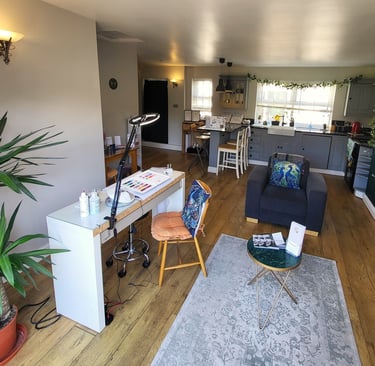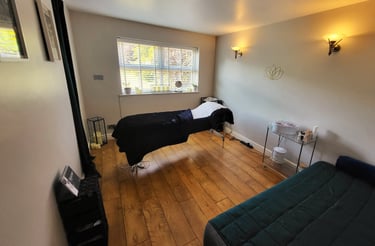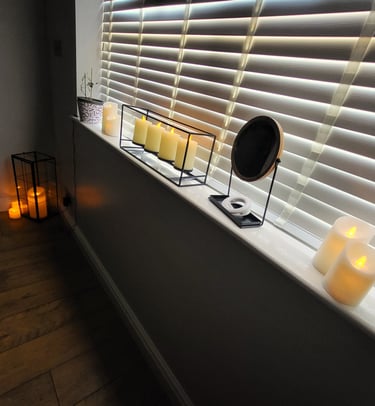SPF
Just for summer?
Samantha Rice
1/23/20254 min read
NO!
It’s true UV is higher in summer which means more protection is needed, and all skin photo-types are at risk of UV damage, but that doesn't necessarily mean you need to buy the highest SPF you can find.
SPF stands for Sun Protection Factor and the number indicates how well it protects you from the suns UV rays.
You may be surprised to find that between a factor 15 and a factor 50+ there is only a 5% difference in protection.
- SPF 15 = 93% protection
- SPF 30 = 97% protection
- SPF 50+ = 98% protection
One of the most important things to look for when buying an SPF is a Broad-Spectrum SPF.
Broad-Spectrum SPF refers to sunscreens that protect the skin from both UVA and UVB rays. If your sunscreen is not a Broad-spectrum SPF it will not protect you from all UVA rays, even if it has a high factor.
Did you know?
There are 3 types of UV rays produced by the sun, as most people know UV rays are harmful, but the different rays are not all equal and they each affect the skin in different ways.
- UVA rays
UVA rays are sneaky… they are the most prevalent form of UV radiation on Earth.
They are present with equal intensity during all daylight hours.
These rays can penetrate clouds, fog and glass and are the primary culprit for premature aging and retina damage because they penetrate more deeply into the skin than UVB rays. UVA rays are also the primary ray in tanning machines, and any sign of a tan means DNA damage.
- UVB rays
UVB rays are most likely what comes to mind when people think of harmful UV rays. They are primarily responsible for sunburn and reddening of the skin, and their intensity depends on the weather, time of day and location.
However, UVB rays cannot significantly penetrate glass and they mostly damage the skins outermost layers.
Together UVA and UVB rays can damage the skins DNA to the point that genetic mutations occur which can lead to skin cancer.
- UVC rays
UVC rays have the shortest wavelength of all three UV rays and are the most damaging.
Fortunately, UVC rays from the sun are absorbed by the Ozone layer before reaching Earth, therefore the only way humans can be exposed to UVC rays are from an artificial source like a laser.
Skin Damage and Premature Aging
UV rays are the main creators of free radicals in the skin, UV accounts for up to 80% of the aging process. Free radicals are unstable molecules that steal energy from healthy cells, causing oxidative stress. This activates enzymes that break down collagen and damages cell DNA, causing premature aging.
UVB penetrates and damages the outer layers of skin, over exposure can cause tanning, sunburn and in some cases blistering.
When UV rays hit the skins surface, they cause cell DNA damage, cells in the Dermis produce melanin in the Epidermis to prevent further damage. This process causes a tan which is your skins way of telling you, your skin has been over exposed to the sun.
Continuous over exposure to UV rays causes damage to the melanocyte cells resulting in hyperpigmentation/sunspots, these can take years to come to the surface of your skin, so it’s important to protect your skin from UV exposure before you start to notice pigmentation.
UVB is mostly absorbed by the Epidermis and damages cell DNA causing DNA mutations that can lead to skin cancer. DNA tells our cells how to function, if enough DNA damage builds up over time it can cause our cells to start growing out of control which can lead to skin cancer.
The most effective way to avoid over exposure to UVB is to avoid it completely, however this is not always possible, so the next best option is to use an effective sunscreen.
An effective sunscreen should stop UV photons before they can reach the skin and inflict damage by containing molecules that absorb, scatter and reflect UV.
Physical blockers in sunscreen titanium dioxide and zinc oxide sit on the surface of the skin and reflect UV rays, which is why it’s so important to make sure you are using a sunscreen that has not expired, as these are active ingredients that lose their potency over time as they decompose and become inactive.
UVA the ray thats always there...
We are surrounded by UVA rays constantly, wherever there is natural daylight, there are UVA rays.
UVA rays have the longest wavelength and can reach the deepest layers of skin which makes them responsible for most of the damage associated with photoaging.
UVA rays penetrate deep into the Dermis damaging the collagen fibres, causing increased production of abnormal elastin, resulting in incorrectly rebuilt skin and degraded collagen caused by malfunctioning enzymes due to repeated daily UVA exposure.
This results in the formation of wrinkles, and the depletion of collagen results in a leathery skin.
Radiation from the sun that reaches the Earth is classified into 3 sections:
- Ultraviolet light – Makes up 5-10% of irradiation energy
- Visible light – Makes up 40% of irradiation energy
- Infrared light – Makes up approximately 50% of irradiation energy
New scientific research has revealed that one third of infrared light can penetrate deeper layers of skin, triggering heat induced responses such as inflammation, hydration loss and degradation of collagen and elastin.
Infrared radiation is now scientifically shown to amplify the damaging effects of UV radiation on skin as 33% of infrared radiation can penetrate the lower levels of skin, significantly escalating the risk of photoaging.
Which Sun Screen?
The most important aspect of finding a sunscreen is finding a broad spectrum, clean and effective sunscreen.
Environs RAD shield mineral sunscreen SPF 15 – Contains powerful physical reflectors; zinc and titanium, combined with antioxidants and other ingredients to provide broad spectrum UV protection, infrared and free radical defence.
Benefits:
- Provides sun protection factor 15
- Physical sunscreens zinc and titanium offer broad protection against UVA and UVB rays
- Supplies skin with essential antioxidants to fight free radical damage from harmful environmental influences
- Suitable for use under makeup due to its lightweight, non-oily texture
Environs RAD antioxidant sun cream SPF 15 – Contains sun filters and reflectors to provide sun protection, along with antioxidants, titanium dioxide, beta-carotene and vitamins C and E which help to fight free radicals.
Benefits:
- Provides sun protection factor 15
- The combination of physical and chemical sunscreens offer broad spectrum protection against UVA and UVB rays
- Supplies skin with essential antioxidants necessary for enhanced protection from harmful environmental influences
- Suitable for use under makeup due to its lightweight, non-oily texture
Both RAD antioxidant sun cream and RAD shield mineral sunscreen are suitable for all ages including babies over 6 months old.
All sunscreens should be frequently reapplied every 90 minutes to 2 hours to achieve optimal protection.
Prevention is always better than the cure and when it comes to sun exposure the risk of no protection is far too great to ignore. From premature photoaging to skin cancer, applying a daily SPF can prevent potentially deadly results.
Protect your skin because it does so much to protect you.
Samantha Rice
Nails and Beauty by Sam
Address
Contact
221 Nottingham Road Borrowash Derby DE72 3FR
Tel: 07479943504 Email: info@nailsandbeautybysam.co.uk












